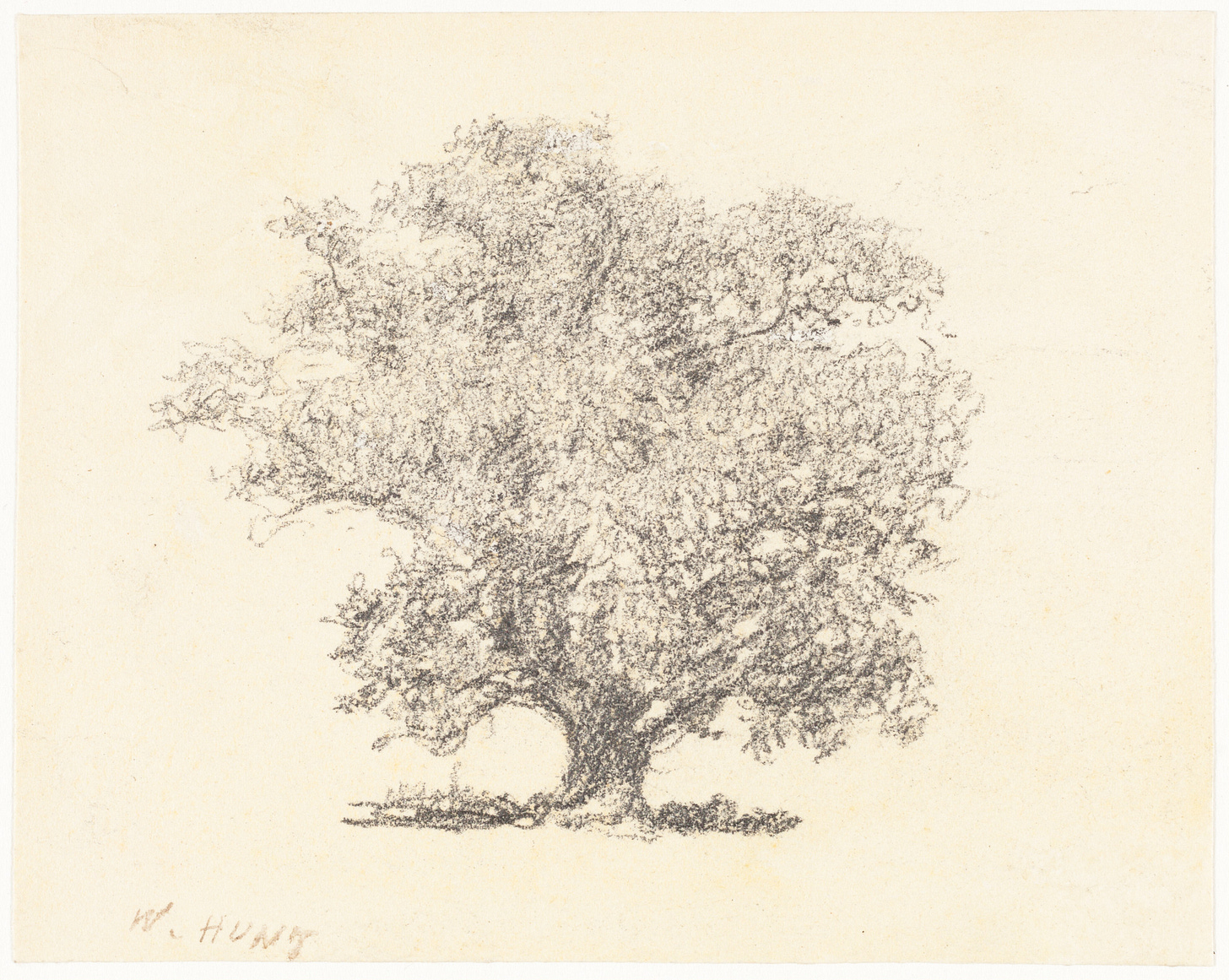How To Draw A Tree
A: You don’t draw a tree.
I've written in the past about the meditative process of drawing from life - how getting lost in observation can be a grounding, calming practice that makes you examine your own experience. Sometimes, though, it can be a bit more frustrating.
How do you draw a tree? Or a bush? Or, really, any complicated, chaotic little piece of vegetation? This is my white whale of drawing from life. I find myself continuously drawn (ha) to the subject and perpetually unable to capture it faithfully. I probably never will.

Maybe that's why it's so fascinating to me. I love trees, forests and natural spaces in general. Visually, they feel full of energy and magic. And so, despite struggling with them so much, I find myself drawing them again and again.
Other artists do this in a way that boggles my mind. From artists of antiquity, capturing the complex detail with interpretive expression or disciplined realism, to my own contemporaries, drawing trees every day in a way that I marvel over.
In 2018, Jamie Hewlett posted a drawing of a tree that's been stuck in my head since I saw it.
It really fucked me up. I think it might have warped how I see every tree I've tried to draw since. When I looked it up today to share it here, I saw a comment from foowa23 that I feel like captures exactly what I was grappling with.
What am I missing? Maybe I skipped a class in university where it was all laid out for me. Maybe I need to buy the right pen to make the lines right. Maybe I'm just thinking about it too much.
The truth is clearly that there’s no “right way” to draw anything. There’s no trick to draw a face or a tree or a dream or a tragedy. There are plenty of guides on how to draw a tree a particular way, but that’s not drawing a tree - it’s drawing someone else’s drawing of a tree.
I remember a teacher in university saying that everything - a face, a piece of patterned fabric, a plain white wall - is exactly the same difficulty to paint. If we're ultimately trying to hone our observational ability, then everything should be thought of as its most fundamental constituent pieces - you don't need to know "how to draw a tree," you just draw what you're looking at.
I agree with this, to a degree, but I remember at the time feeling a bit outraged at the idea. I'd look at a model's face, then at the complicated printed pattern on the fabric hanging behind them, and think to myself that obviously the face is easier to paint - I can actually understand what I'm looking at when I look at a face.

But we're human beings - our brains are designed to recognize faces. We see faces in places where there aren't faces. And so, I've realized that part of what's so hard about drawing a tree is that I'm wrestling with what I know a tree looks like - what it's made of, and how its pieces are arranged - and what I can see that the tree in front of me looks like. I'm trying to convince myself I see things that I can't, while at the same time trying to draw things that don't look like what I expect.
Other artists struggle with drawing hands. When I was in school I remember teachers pointing out how people would "hide hands" by having people posed with their hands behind their backs, in their pockets or scratching the back of their head. I always felt a bit smug that I wasn't afraid of hands. I didn't see that I was doing exactly the same thing at the time - I was hiding trees.

Drawing complicated things is often about simplifying. How do I draw "this" by just sort of "gesturing" over it and creating a symbol for it. Again, as humans we're good at this with faces :) but trees? Clouds? Interlocking brick, the starry night sky or a field of wildflowers? Where do you start?
In my last piece about observational art, I shared a piece by artist Gao Jie that still fascinates me. So much of the page is left blank, but my mind fills it all in and I see this field full of tall grass. I feel it blowing in the wind. I can hear it and smell it. And those trees in the background. Those glorious trees.
So, I guess this is a toast to trying to draw trees - or whatever you're struggling to capture. I'm not really trying to solve this problem - I kind of love it. I don’t think there’s a “right” way to draw or express anything - I bristle at the way people talk about “good” drawings when they’re really describing “realistic” drawings. A realistic drawing is only good if that was the artist’s goal or if that’s what you appreciate in a drawing. A good drawing to me can be a bad drawing to you, and we’ll both be right - so what does realism have to do with it?
A photograph of a tree is its own realistic interpretation of what a tree is. And what about a poem about a tree? Is that any less “good” at representing it truthfully?
I'm going to keep trying to draw trees and, because I'm thinking about it so much, I'll probably never be satisfied. It's nice to know I'll always have something to work on. At least I won't get bored.
Have a nice day! Try drawing a tree. See what you need to do to convince yourself you've captured something about it, and at the same time try not to fool yourself into thinking you drew it at all.
With love,
Simon 🌲🌳🐒🌴🎄








